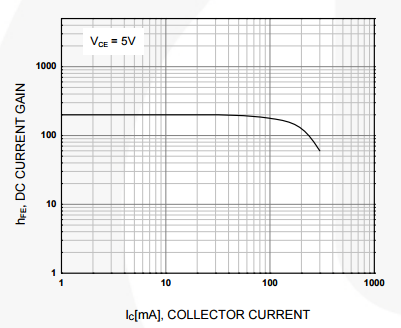I understand there are two models \$I_c=\beta I_b\$ and $$I_c=I_s \exp \left(\frac{V_{BE}}{V_t}\right)$$ for a bipolar junction transistor.
However (correct me if I am wrong), I have not seen any textbook derivation which actually finds \$\beta\$ as a function of the circuit itself.
Is there some reason for this? I am asking this question because I wanted to know if there could be an expression for this behaviour:

Taken from BC547 datasheet.
In other words, given only \$I_C\$,\$V_{BE}\$,\$I_S\$ (is \$V_{CE}\$ required?) can you work out \$\beta\$ without going out and experimentally finding it?
To begin with (in active region), I think there is a forward biased pn junction between the base and the emitter. Thus it would be a case of finding the diode current (\$I_B\$) for the applied voltage (\$V_{BE}\$)? And then relating this to the \$I_C\$?
Small related question, is the \$I_S\$ in the $$I_c=I_s \exp \left(\frac{V_{BE}}{V_t}\right)$$ stated anywhere in a transistor datasheet?
